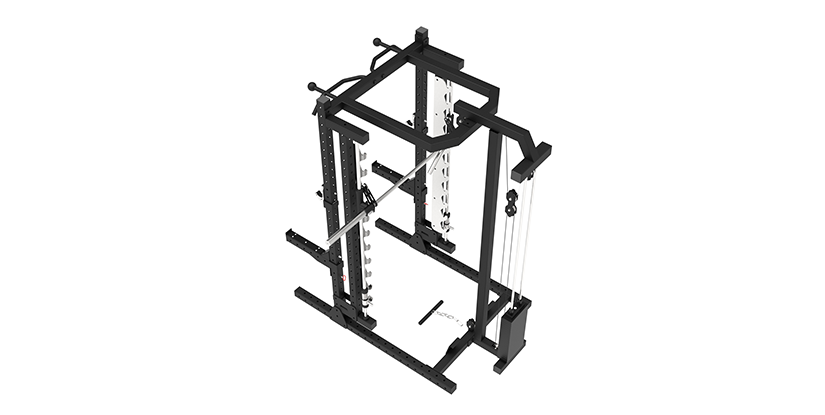Squat rack exercises for glutes sounded basic at first, but I wanted to see if they could actually deliver results. I wasn’t using fancy machines or tons of equipment — just a rack, a bar, and some grit. Turns out, the rack is more versatile than I thought — especially for glute training.
5 Glute Exercises I Swear By Using a Squat Rack
- Barbell Back Squats
- Barbell Front Squats
- Romanian Deadlifts (RDLs)
- Sumo Squats (Wide-Stance Squats)
- Rack Pulls
Once I got serious about training glutes, I realized the squat rack had everything I needed. These are the squat rack exercises for glutes I keep coming back to — simple, effective, and easy to load.
- Barbell Back Squats
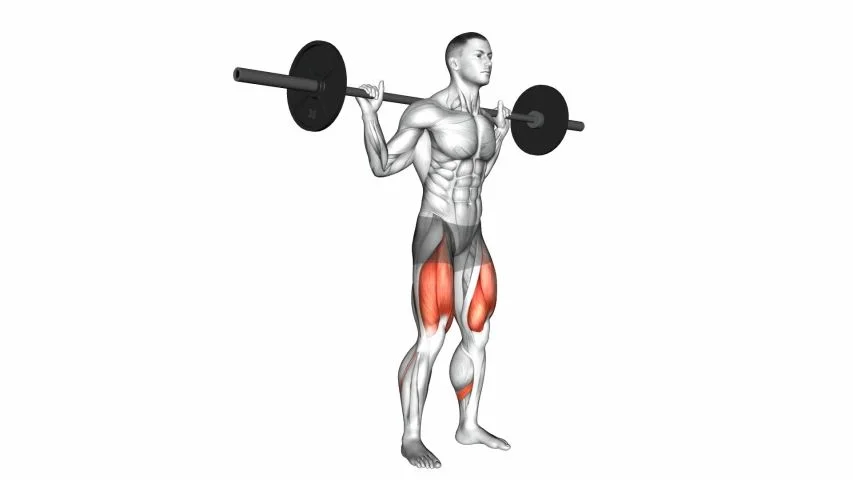
How to:
Set the barbell up on your traps, feet about shoulder-width or wider. I always brace my core and sit deep — no half reps. Depth is key here.
Glute Focus:
When I really drive through my heels and push my hips back, I feel it light up my glutes. Hitting depth (below parallel) makes a huge difference.
- Barbell Front Squats
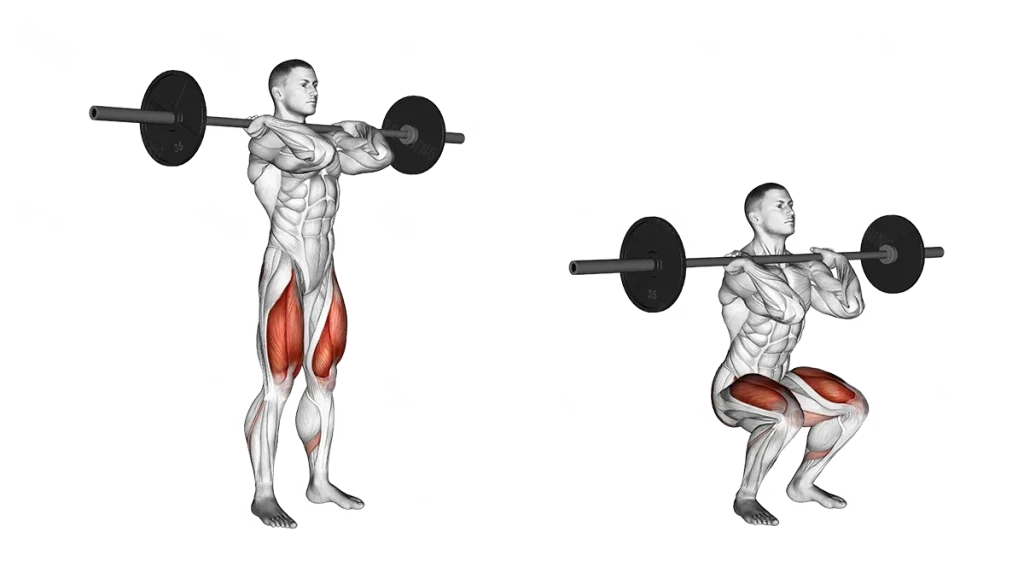
How to:
Bar sits on your front delts, elbows high, chest up. Feet shoulder-width, squat down slow, keeping knees out.
Glute Focus:
Not as glute-heavy as back squats, but they still fire up — especially when I slow the tempo and sit deep. Helps balance my glutes and quads.
- Romanian Deadlifts (RDLs)
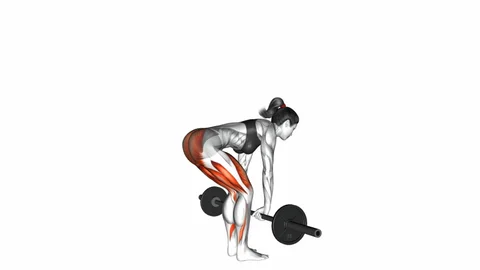
How to:
I usually start with the bar in the rack at mid-thigh height. From there, I step back, soft bend in the knees, then hinge at the hips. Keep the bar close, no rounding.
Glute Focus:
This one hits deep. The stretch in the glutes is insane when I move slow and controlled. I don’t rush the bottom — that’s where the work is.
- Sumo Squats (Wide-Stance Squats)
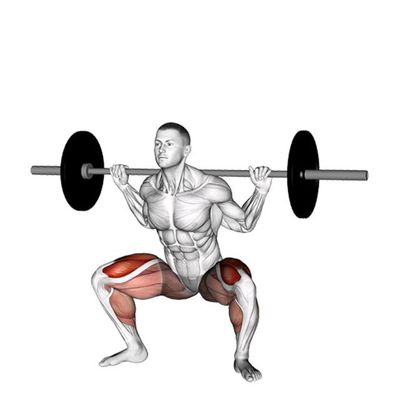
How to:
Bar on my back, feet wide and toes turned out a bit. I drop my hips down, not back. Took a few reps to figure out the right stance.
Glute Focus:
These crush my side glutes (glute med). I cue myself to “push the floor apart” — feels silly, works crazy well.
- Rack Pulls

How to:
Set the bar on pins just below my knees. I grip it tight, hinge at the hips, and drive up like a shorter deadlift. No jerking — clean pull.
Glute Focus:
This one’s great for lockout strength. I feel it right at the top of my glutes and hamstrings. Good for building that thick, strong rear chain.
Quick Tips for Actually Seeing Results
After running these squat rack exercises for glutes for a few weeks, here’s what really moved the needle for me:
- Form comes first.
No joke — sloppy reps don’t do much. I filmed a few sets and realized my depth was off. Fixing that helped big time. - Progressive overload = everything.
I didn’t jump weight every session, but I added something each week — a few more reps, a slower tempo, an extra set. Just keep nudging it forward. - Glutes won’t grow if they’re not working.
I know, “mind-muscle connection” sounds like influencer fluff. But when I really focused on squeezing my glutes, especially on RDLs and rack pulls, I felt way more activation. - Recovery isn’t optional.
Training hard without enough rest just wrecked my energy. I had to remind myself: sore doesn’t always mean better. Glutes need recovery like any other muscle group.
These are the little things that kept the progress going — and made the work from the rack actually worth it.
A squat rack is more than enough to build strong, defined glutes — no fluff, just focused work. Stick with it, train with intention, and your glutes will show up.
FAQs about Squat Rack Exercises for Glutes
To effectively target your glutes using squat rack exercises, it is essential to focus on proper form and technique. When performing squats, ensure that you are engaging your glutes by driving through your heels and pushing your hips forward as you rise. One of the best squat rack exercises for glutes is the barbell back squat. By keeping your chest up and knees tracking over your toes, you engage the glutes more effectively. Additionally, exercises like hip thrusts and Romanian deadlifts, performed on the squat rack, specifically target the glutes by isolating the hip extension movement. It’s important to use the right weight to ensure adequate activation, making sure the glutes are working throughout the movement rather than relying on other muscle groups like the quads.
Incorporating pause reps or adjusting your stance to a wider position can also increase glute activation during squats. Additionally, using a squat rack for glutes allows for controlled range of motion and the ability to progressively overload your glutes over time for better growth and strength.
To achieve optimal glute growth, it’s important to maintain proper squat form. Begin by setting up the squat rack with the barbell at a comfortable height, ensuring your feet are shoulder-width apart or slightly wider. A wider stance places more emphasis on the glutes compared to a narrower stance. As you descend into the squat, focus on pushing your hips back and bending your knees, keeping your back straight. Once you reach the bottom of the squat, drive through your heels and engage your glutes to stand up.
Additionally, it is crucial to avoid letting your knees collapse inward during the squat, as this reduces glute activation and can lead to injury. Make sure to maintain a neutral spine and keep your chest lifted throughout the movement. Squat rack exercises for glutes like the deep barbell back squat or Bulgarian split squat can maximize glute activation, leading to better muscle growth. If you are performing a squat for glute development, it’s important to lower yourself at least to parallel or deeper to fully activate the glute muscles.
Activating your glutes during squats requires proper technique and conscious effort. One of the most important factors in activating the glutes while squatting is foot placement. Position your feet slightly wider than shoulder-width, with toes pointing slightly outward. As you lower into the squat, ensure that your knees track over your toes, and avoid letting them cave inwards. Focus on pushing through your heels as you rise, and consciously squeeze your glutes at the top of the movement.
Another way to enhance glute activation is by performing pause squats. Pausing at the bottom of the squat for a brief moment places extra tension on the glutes, forcing them to work harder. Additionally, using a squat rack for glutes allows you to safely perform heavier squats with proper depth, further engaging the glutes. Squat rack exercises for glutes like Romanian deadlifts or hip thrusts are also excellent for isolating and activating the glutes more effectively during your workout.
Yes, squats can significantly help lift a flat or saggy bum by targeting and strengthening the glute muscles. When performed correctly, squats engage the gluteus maximus, the largest muscle in the glutes, which is responsible for the roundness and firmness of the backside. Deep squats, performed with a squat rack, allow you to lower your body to a depth where the glutes are fully activated. This encourages muscle growth and tightens the glutes.
To maximize results, incorporate a variety of squat rack exercises for glutes, such as hip thrusts, Bulgarian split squats, and barbell back squats. These exercises help activate the glutes from different angles and promote overall muscle growth. Remember, it’s essential to progressively increase the resistance over time and maintain proper squat form to continue seeing improvements. A consistent glute workout routine with squat rack exercises can not only help lift a saggy bum but also give you a firmer, more sculpted backside.
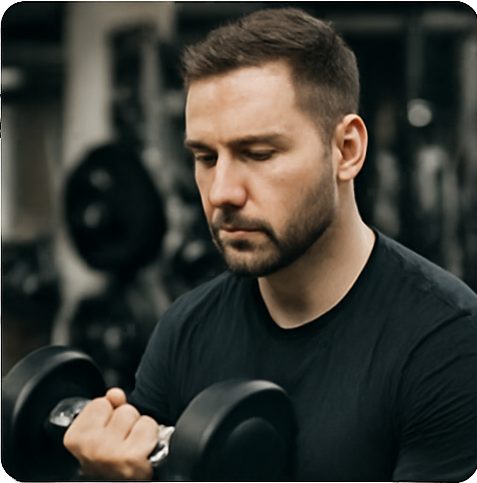
Hi, I’m the editor here at Leadman Fitness. We’re a manufacturer focused on producing top-quality barbells, plates, kettlebells, dumbbells, and strength training gear. I’ve been into sports and fitness for years, and I know my way around all kinds of gym equipment—both from using it and helping create it.
I spend a lot of time understanding the real problems people run into in the gym—whether it’s beginners trying to pick the right gear or experienced lifters looking for something more durable. I stay in close touch with our production team and talk directly with other equipment makers, so we’re always improving based on what real lifters and coaches are looking for.
What I share comes from hands-on experience—stuff that actually helps people train better, not just in theory, but in real gyms.
